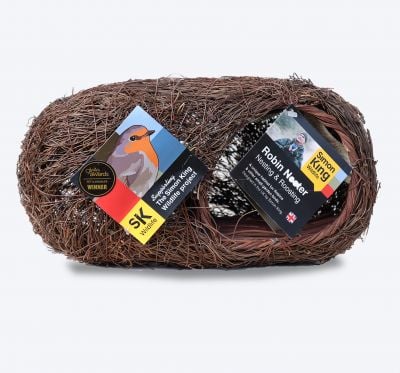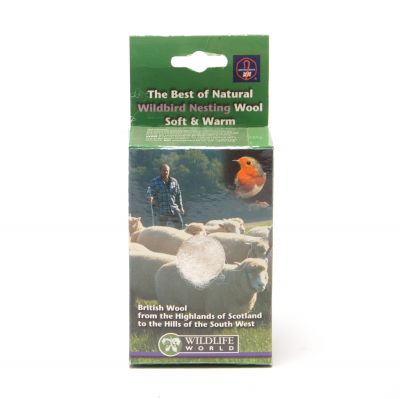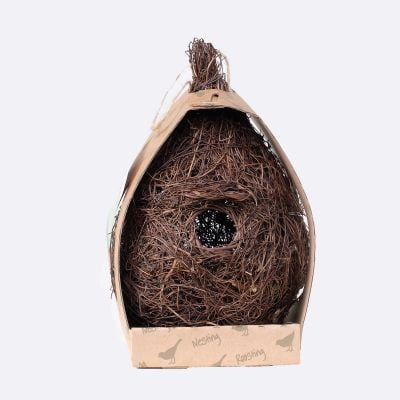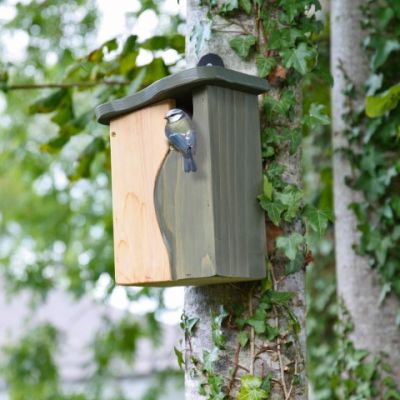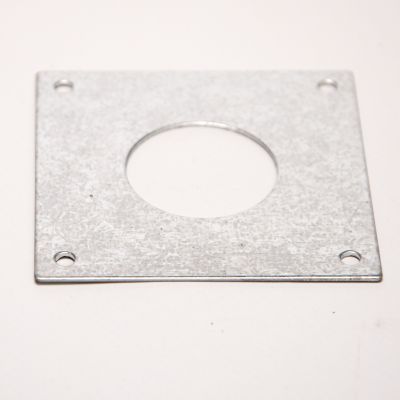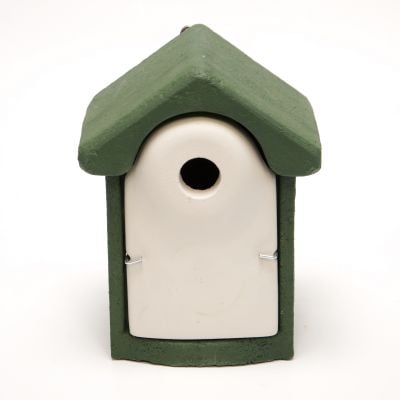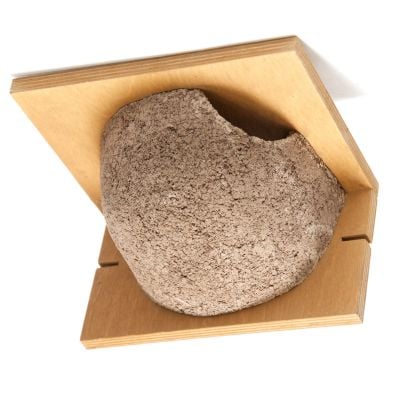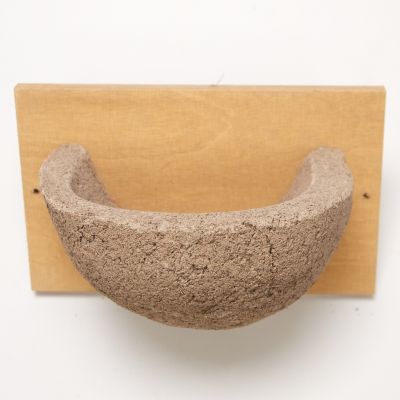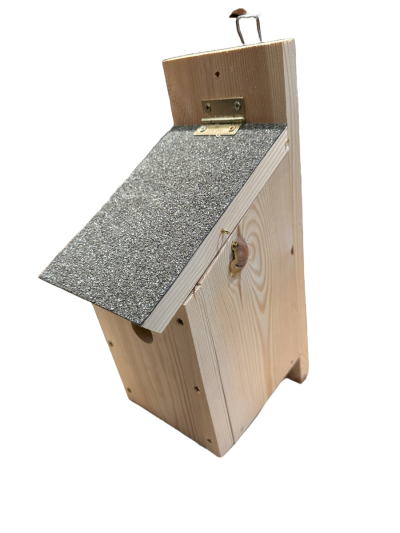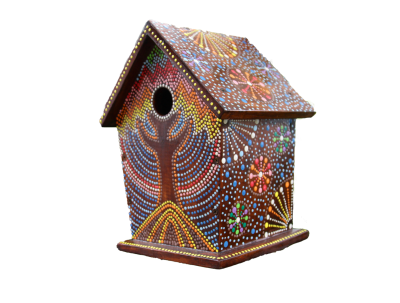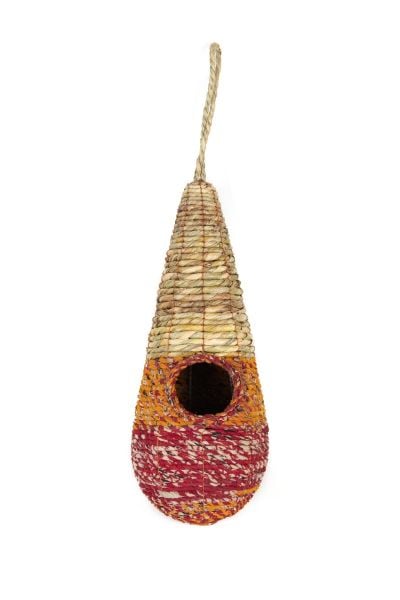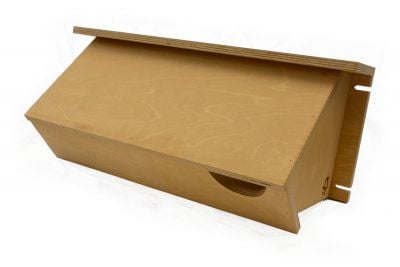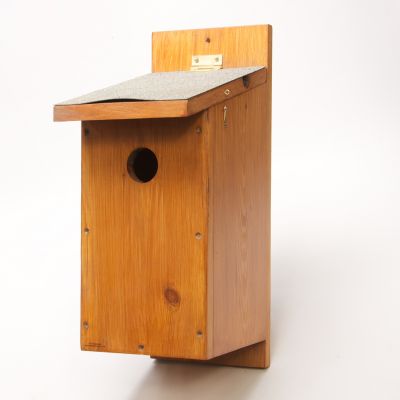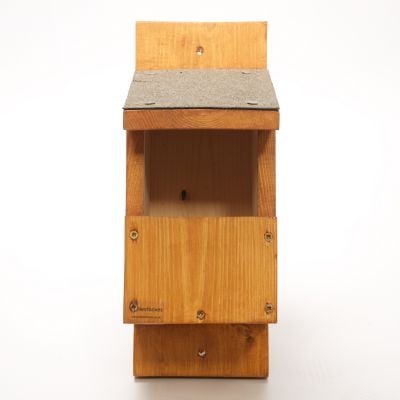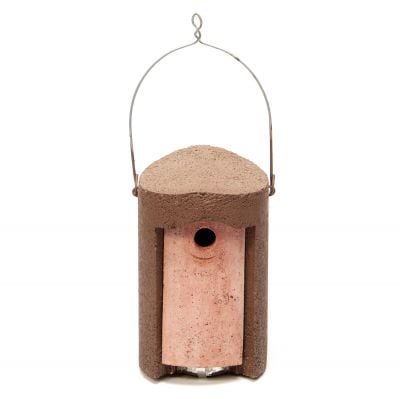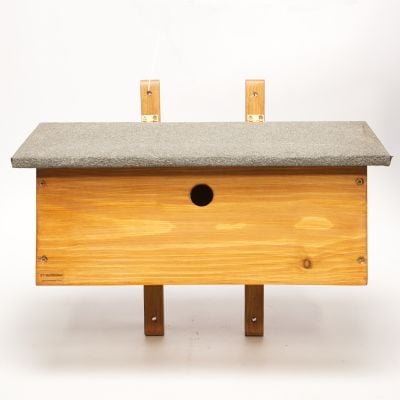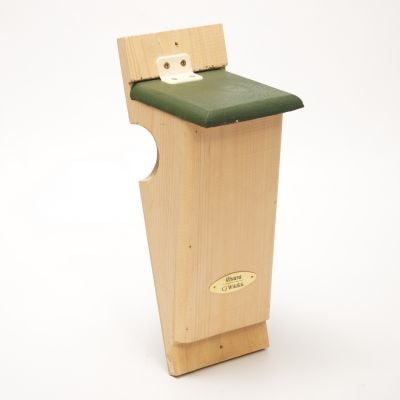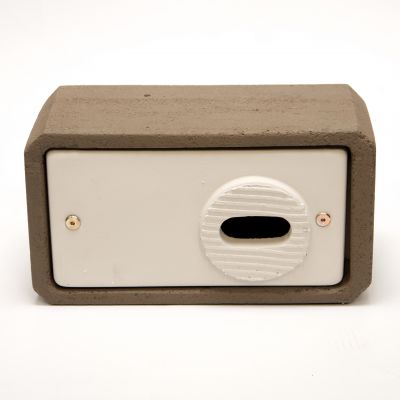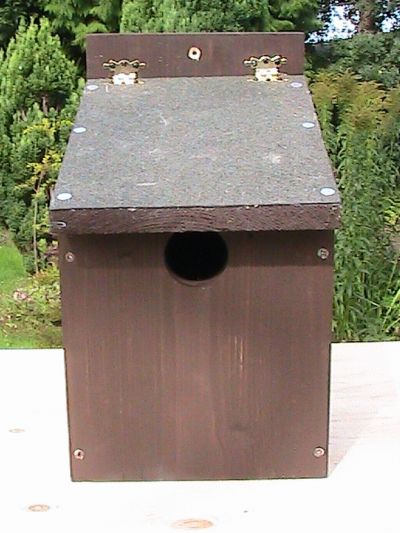There are basically three different types of bird box:
Rectangular or other shapes but which all have a round entrance hole near the top – this design is suitable for species including Blue tit, Great tit, House sparrow, Tree sparrow and Starling, with the nest box and its entrance replicating a natural hole in a tree or gap in a wall etc. The differences between nest boxes within this type is mainly the size of the entrance hole, with this typically being 28mm for species of tit, 32mm for House Sparrow, and 45mm for Starling. The actual size of the box is also larger for Starling compared to those for species of tit, plus there’s an option for a terrace nest box for House sparrows – which like to nest in small colonies – which is made up of three separate nesting chambers joined together.
Open-fronted boxes – these are designed for species such as Robin, Blackbird and Song thrush, which all like to nest in vegetation that is out of sight of predators. This type of box gives the bird a base and structure to build its own nest within and therefore provides it with added stability and safety.
Specialist nest boxes – these come in a variety of shapes and sizes, with all of them being aimed at a specific species of bird. For example, Swift nest boxes are relatively long and narrow with the entrance hole towards one end, with the shape and design replicating the type of location they’d choose within the eaves of an old property. Some specialist nest boxes are also fairly large, with an example being a Tawny owl box which replicates a cavity in a tree which this good-sized species would naturally select, but are often in very short supply.
Bird houses, bird boxes and nest boxes are terms often used interchangeably, though in the UK we usually say bird box or nest box, with ‘bird house’ the norm in the USA.
Along with the main purpose of providing a nest site for breeding birds, nest boxes also provide a very important roosting habitat in the winter. This is because many species of garden songbird require dry, safe and relatively warm conditions to help them survive long winter nights, with a wooden or woodstone nest box being ideal.
It’s best to keep the two a good distance apart, because visiting birds are likely to disturb the nesting adult birds which will then instinctively defend the nest, and in so doing use up valuable energy and time. In addition, having the two close together may attract unwanted predators to the nest box such as Magpies.
Although we don’t sell them, there are products on the market which incorporate a nest box and feeder together – often in the form of a bird table. These should never be used as they are a recipe for disaster.
There is no single rule because it very much depends on the type of box and the species of bird it’s intended for. However, in general, any nest box should be positioned in a direction where it does not get direct midday sunlight, as this could result in the box becoming too hot and therefore risks the lives of the young birds inside it. So never a south facing aspect unless there is significant shade above and around the box, with east facing being ideal.
As a broad guide for the three different types of nest box:
Nest boxes for species of tit and sparrow which have an entrance hole at the top – these can be positioned in a tree, on a fence or a house wall, though note the important point above about avoiding direct sunlight. The height of the box is not especially critical, though it should always be at least 2 metres from the ground and ideally around 3 metres. Avoid areas where there’s likely to be a lot of human activity such as close to an entrance door to a house, as disturbance will discourage adoption of the box or lead to abandonment after it’s been taken.
Open-fronted nest boxes for species such as Robin and Blackbird – these should always be positioned with vegetation, with an ideal location being behind a climbing plant against a wall or fence. Height is not especially critical in the positioning, but at least 1.5 metres above the ground is recommended.
Specialist nest boxes – this entirely depends on the intended species. Examples being:
-Swift nest box which should be located under the eaves of a house or other building, ideally north east or north west facing, and with a clear flight path in – so avoid a position which has a tree close to it.
-Tawny owl box which needs to be high on the trunk of a tree and ideally at least 5 metres from the ground. Because of its large entrance hole, it’s also important that it’s positioned away from prevailing westerly winds as this would allow rain to come into the box.
As these are open-fronted – with one of our products made of fine brushwood rather than wood – then they need to be located within vegetation so they are largely out of sight. Choose a dense shrub or climbing plant against a wall or fence.
At Vine House Farm, we stock a range of bird boxes for gardens. These include:
- Wooden nest boxes
-Woodstone nest boxes (also called Woodcrete)
-Nest boxes for Starlings
-Robin nesters
-Sparrow nest boxes
-Tit nesting boxes
-Wooden fronted bird boxes
-Natural log bird boxes
-Treecreeper nest boxes

